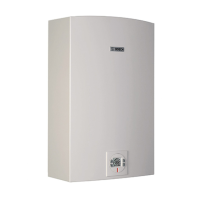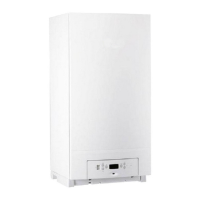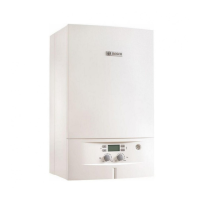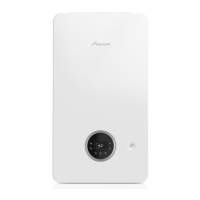Engineering information and sizing
Systemlösung – 6 720 885 509 (2018/03)
16
3 Engineering information and sizing
3.1 Basic principles
3.1.1 Economic viability
The economic viability of a system combined of CHP
with waste heat use in a 4-draught steam boiler is an
important criterion for making decisions on investment
and should therefore be made already during the basic
evaluation of the project.
In the following, important general conditions are shown
for the use of the described system combinations. These
general conditions are preconditions for an economic
use and allow for a first evaluation of economic
efficiency.
On this basis, the system can be dimensioned.
3.1.2 Economic general conditions
Creation of steam
Basic condition is a demand as continuous as possible of
water vapour for effecting thermal processes with a
required temperature level clearly above 100 °C. In
general, this is industrial process vapour.
When using the vapour, it has to be differentiated
between direct and indirect heating.
For indirect heating, the steam dispenses its
evaporation enthalpy (energy that is set free in the boiler
during water evaporation) via a heat exchanger to the
medium to be heated. The thus produces condensate is
led back to the steam boiler.
For direct heating, steam is directly lead to the medium
to be heated, the medium absorbs the steam in general
and no condensate forms, or the condensate cannot be
supplied to the process without additional measures.
A complete or partial direct heating requires an
increased additional amount of water. Energy required
for preheating can be supplied by motor waste heat of
the CHP module and can lead to an increased runtime of
the CHP module.
Internal power consumption
A CHP module creates high-temperature heat, low-
temperature heat and current.
The current of the CHP system can be used for internal
power consumption or can be supplied to the public
power network.
The infeed of current to the public network can be
promoted depending on CHP size in acc. with KWKG
(CHP Act, Germany).
For the economic viability of a CHP module, it is crucial
to clearly define the currently valid subsidy conditions.
If the created power is used internally, the economic
efficiency of the CHP module increases with the price
difference between electricity tariff and gas price.
LT heat (low-temperature heat)
In order to efficiently operate a CHP module, a high
amount of annual operating hours is required. Main task
is here the use of motor waste heat (temperature level
of approx. 85/70 °C).
The motor waste heat can be used for process heat,
for DHW heating, for heating or for make-up water
preheating for steam production. Here a heat transfer as
continuous as possible is important.
HT heat (high temperature heat)
For a CHP module with external waste heat use, the
motor flue is used for steam production at temperatures
above 110 °C in an external steam generator
(Æ chapter 2).
Summary
The used fuels and resulting energy flow should be
known.
Only if you know the energy consumption and energy
costs, you can optimally plan a system.
For designing and operation of an economically efficient
system, a use as continuous as possible of low-
temperature heat, steam and also internal current is
crucial.
The larger the margin between the energy price for gas
and the energy price for current, the higher the
efficiency of a CHP system.
At ... hours of
operation per year
a cost-efficient use of a CHP
module is ...
2000 very unlikely
3000 unlikely
4000 possible
5000 likely
6000 very likely
Table 6 Economic viability of a CHP module in relation to
the number of hours of operation in a year
For system reasons, current, LT heat and HT
heat are always created simultaneously. To
ensure a high annual efficiency, during CHP
operation a performance assessments by
the corresponding generators in the steam
boiler should be effected.

